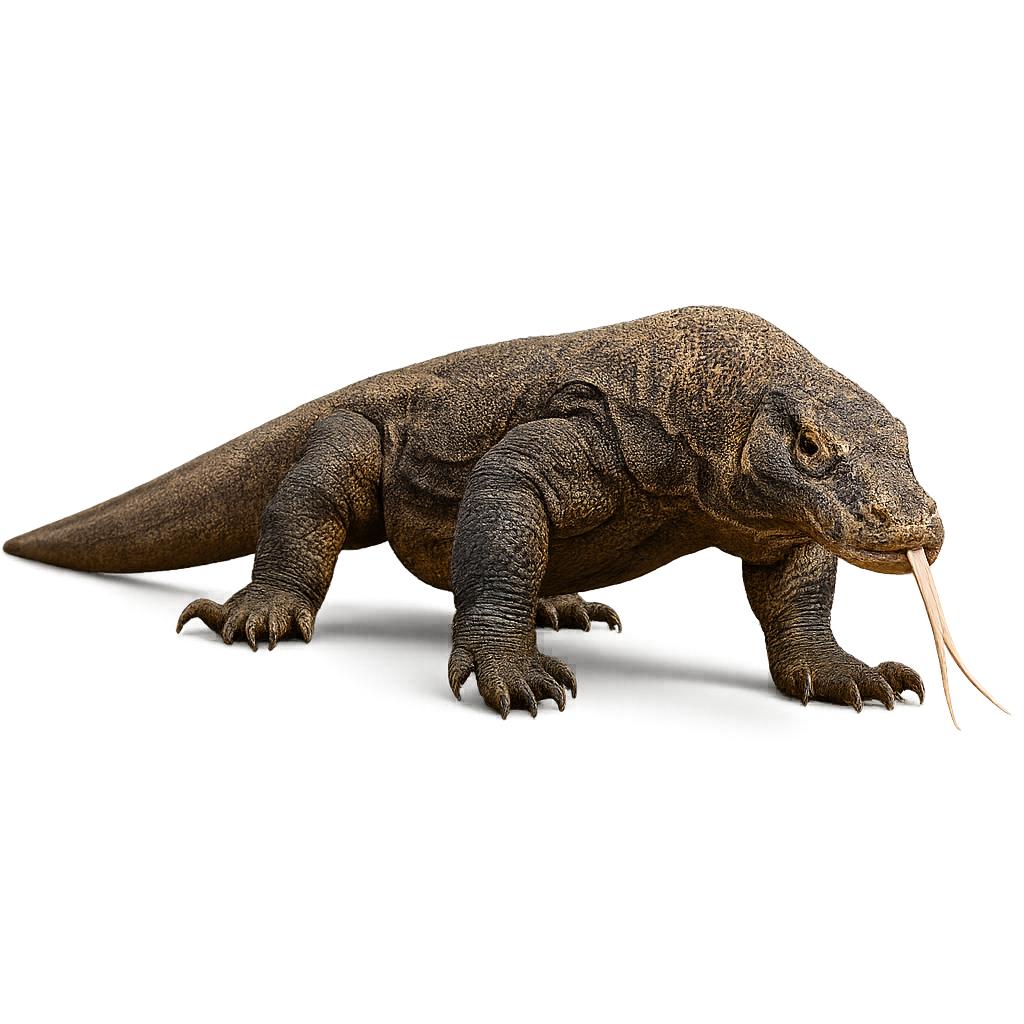Your wildlife photography guide.
Explore the komodo dragon in detail, study its behavior, prepare your shots.
Where to observe and photograph the komodo dragon in the wild
Learn where and when to spot the komodo dragon in the wild, how to identify the species based on distinctive features, and what natural environments it inhabits. The WildlifePhotographer app offers tailored photography tips that reflect the komodo dragon’s behavior, helping you capture better wildlife images. Explore the full species profile for key information including description, habitat, active periods, and approach techniques.
Komodo dragon
Scientific name: Varanus komodoensis

IUCN Status: Endangered
Family: VARANIDAE
Group: Reptiles
Sensitivity to human approach: Suspicious
Minimum approach distance: 20 m
Reproduction period: March to May
Incubation: 7-8 mois
Births: March to May
Habitat:
Komodo, Rinca, and Flores islands in Indonesia, including dry forests and savannas
Activity period :
Active during the day when temperatures are favorable, often seen basking in the sun.
Identification and description:
The Komodo Dragon is a large carnivorous lizard, famous for its impressive size and strength. It typically measures between 2 and 3 meters in length and can weigh up to 70 kg. Its massive body is covered with scales, usually grayish-green, which helps it blend into its natural environment. The Komodo Dragon is found exclusively on a few islands in Indonesia, including Komodo, Rinca, Flores, and Gili Motang. This apex predator feeds on a variety of animals, from birds to mammals like deer, as well as carrion. It primarily hunts using its developed sense of smell, able to detect odors from several kilometers away. Due to its powerful bite and saliva filled with bacteria, the Komodo Dragon can incapacitate its prey and wait for it to succumb to infection before feeding. The species is listed as vulnerable, threatened by habitat loss, illegal hunting, and excessive tourism. Conservation efforts are in place to protect this unique creature and its habitat.
Recommended lens:
200 mm – adjust based on distance, desired framing (portrait or habitat), and approach conditions.
Photography tips:
To photograph the Komodo dragon, a telephoto lens is essential to capture its imposing silhouette, flickering tongue, and rough skin texture without disturbing it. Take photos during the day, when the dragon is active — whether exploring its territory, resting, or interacting with its surroundings. Be patient, stay quiet, and avoid sudden movements. Always respect the safety distance: this powerful predator can be unpredictable, especially if it feels threatened.
The WildlifePhotographer App is coming soon!
Be the first to explore the best nature spots, track rutting seasons, log your observations, and observe more wildlife.
Already 1 431 wildlife lovers subscribed worldwide

